Aug 14
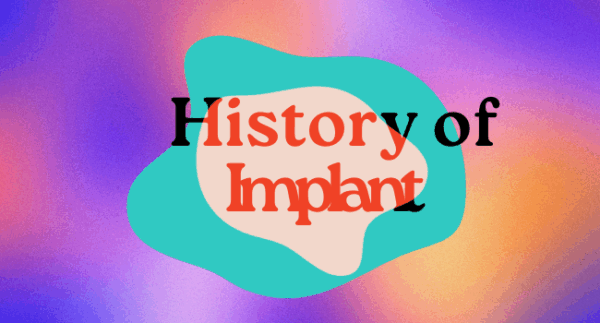
Help Us Protect Access to Sexual and Reproductive Health Care Today!
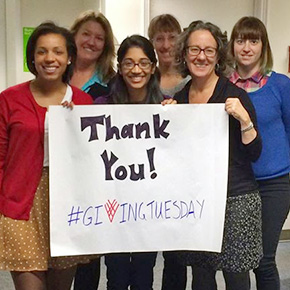 The Reproductive Health Access Project (RHAP) launched its annual fundraising campaign in November with the goal of raising $36,000 by the end of the year. A group of generous donors agreed to match all donations we received by December 31 – up to $15,000. Our amazing supporters helped us raise $52,000 – 44% more than we planned!
The Reproductive Health Access Project (RHAP) launched its annual fundraising campaign in November with the goal of raising $36,000 by the end of the year. A group of generous donors agreed to match all donations we received by December 31 – up to $15,000. Our amazing supporters helped us raise $52,000 – 44% more than we planned!
While donors showed their generosity throughout the campaign, one of the most exciting days was #GivingTuesday on December 2. Created several years ago as a response to Black Friday and Cyber Monday, #GivingTuesday is a national day of giving where people all over the world show support for their favorite charities and causes. This was the second year RHAP participated in #GivingTuesday and we were blown away by the results. We raised just over $6,000 in one day!
The money raised during our annual campaign will go directly towards expanding our training programs in 2015. This includes supporting the expansion of our Reproductive Health and Advocacy Fellowship and our two newest programs – the Miscarriage Care Initiative and the Hands-on Reproductive Health Training Center. We are also working to expand one of our core programs, the Reproductive Health Access Network which brings together 700 family physicians, nurse practitioners, midwives and other primary care clinicians across the United States. The Network creates a safe space for healthcare providers to get the professional support and assistance they need to provide abortion, contraception and miscarriage care.
None of these programs would be possible without the support of our wonderful donors. Thank you so much for making this our most successful fundraising campaign to date and ensuring that we can continue doing great work in the year to come.
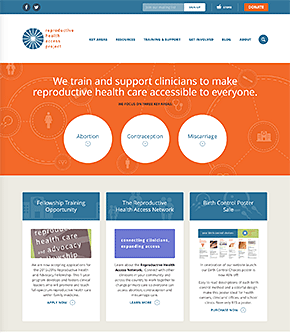 One of the most important things RHAP does is develop and share clinical tools and resources that are used to provide up-to-date, patient-centered reproductive healthcare. Our website is the most important way we share our tools and resources with folks across the country and around the world. In 2014 more than 500,000 users accessed reproductive health information on our website, that is more than double the number accessing our website in 2013. But, we know we can do better.
One of the most important things RHAP does is develop and share clinical tools and resources that are used to provide up-to-date, patient-centered reproductive healthcare. Our website is the most important way we share our tools and resources with folks across the country and around the world. In 2014 more than 500,000 users accessed reproductive health information on our website, that is more than double the number accessing our website in 2013. But, we know we can do better.
In January, we launched a completely redesigned website. While it looks very different, all our great patient education materials, clinical protocols, teaching tools and administrative resources are there.
We had several objectives in creating a new website. We wanted to create a website that was accessible across multiple platforms – one that is as easy to read on a desktop computer and as it is on mobile devices. We wanted to make our tools and resources easier to find, download and share. We wanted to make it easier for everyone to understand the work we do and why we do it. And finally, we wanted to offer more opportunities for folks to get involved in our movement.
We love our new website. We think you will love it too. See for yourself at www.reproductiveaccess.org.
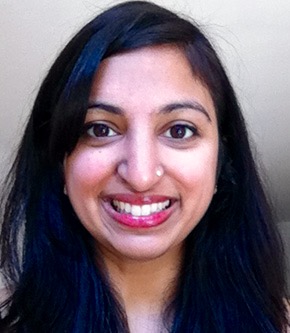 Meet Rupa Natarajan, M.D., family doctor, reproductive health specialist, and faculty at a family medicine residency program based in Harlem. She was a Reproductive Health Care and Advocacy Fellow with RHAP in 2013-2014.
Meet Rupa Natarajan, M.D., family doctor, reproductive health specialist, and faculty at a family medicine residency program based in Harlem. She was a Reproductive Health Care and Advocacy Fellow with RHAP in 2013-2014.
“While in college I attended a lecture that explained in dismaying detail how difficult it was to access abortion care in the majority of the United States, and how women’s health care was overall an incredibly marginalized field of medicine. This spurred me to get involved in the reproductive justice movement and attend the March for Women’s Lives. I became so inspired by my experiences that I applied to medical school with the goal of becoming an abortion provider. I chose family medicine in order to pursue abortion care through a primary care and community health model.
I was blessed to work with supportive mentors throughout my training, but unfortunately did not obtain enough training in residency to work in abortion care directly after graduation. I saw the RHAP fellowship as an opportunity to develop my skills and strengthen my relationships with reproductive health mentors. The fellowship helped me learn not only how to provide evidence-based, patient-centered reproductive health care, but also to teach these skills, and to provide comprehensive health care within a community health model.
As a result of my work with RHAP, I have a fantastic job now where I get to provide full spectrum health care to my patients. I work in a setting where I am fully supported to provide same day care for patients who need contraception, abortions, or any other health concerns that may arise. Possibly the best part of my job is that I can serve as a model as I teach students and residents, to encourage them in pursuing similar work after residency, instilling in them the same enthusiasm I have for this work and advocating for patients in the community. I champion for them that this kind of patient-centered care is not only a possibility, but a human right.
Reproductive health care is important to me because I see it as an integral part of individual and community health, and because I see inappropriate mechanisms in place across the country to limit women’s access to reproductive health care. The ability to make decisions about if/when to parent, have an abortion, or adopt can affect all aspects of a woman and her family’s lives. As health care professionals, we have the ability to safely help our patients achieve their highest levels of health and well-being through providing compassionate, non-judgmental care. It is a privilege for me to take care of women and their loved ones every day.”
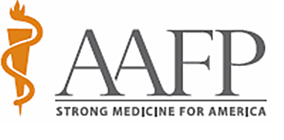 In an effort to create a cohesive community of reproductive health care providers within the American Academy of Family Physicians, RHAP’s medical director, Dr. Linda Prine, joined forces with other reproductive health leaders to form the Reproductive Health Care Member Interest Group.
In an effort to create a cohesive community of reproductive health care providers within the American Academy of Family Physicians, RHAP’s medical director, Dr. Linda Prine, joined forces with other reproductive health leaders to form the Reproductive Health Care Member Interest Group.
Dr. Prine highlighted the importance of the group saying, “The AAFP is the largest family medicine organization in the country, with a lot of political influence. The Member Interest Group is a way that AAFP members can work together to improve AAFP policies around reproductive health care in family medicine.” The member interest group can open up opportunities to share training tools and presentation slides, develop a family planning self assessment module, and present a unified message on reproductive health issues to AAFP leadership.
Some of the key objectives of the AAFP’s reproductive health care member interest group are to:
We believe the AAFP’s new member interest group will be a powerful tool for identifying and cultivating family medicine reproductive health leaders across the country.
Subscribe to receive monthly updates from the Reproductive Health Access Project.
Your gift allows us to train and support health care providers across the United States so they can offer patients compassionate and comprehensive care.
Aug 14
